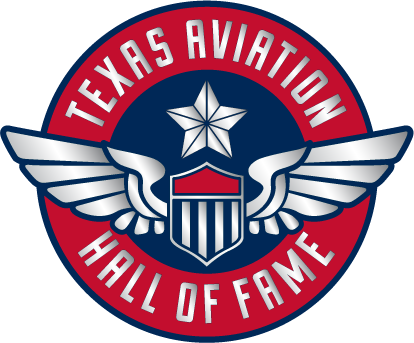LSFM Wings Over Houston Preview Party
On Friday, October 21, the Lone Star Flight Museum board of directors hosted a preview of the 2016 Wings Over Houston Airshow at Ellington Airport before it was opened to the public. Guests enjoyed watching practices by the U.S. Navy Blue Angels, LSFM Warbirds, the Commemorative Air Force and a Tora! Tora! Tora! demo.
Attendees were also treated to a private “hard hat” tour of the museum’s future home currently under construction just down the road from the airshow. This sneak-peek provided guests with a behind-the-scenes look at what will become a state-of-the-art aviation history and STEM museum opening in 2017.
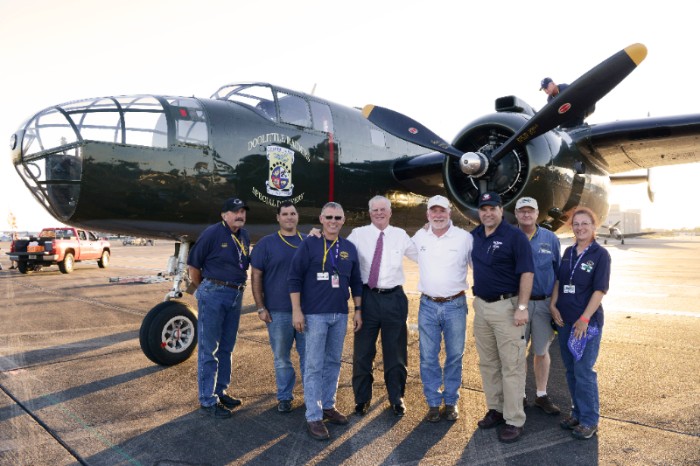
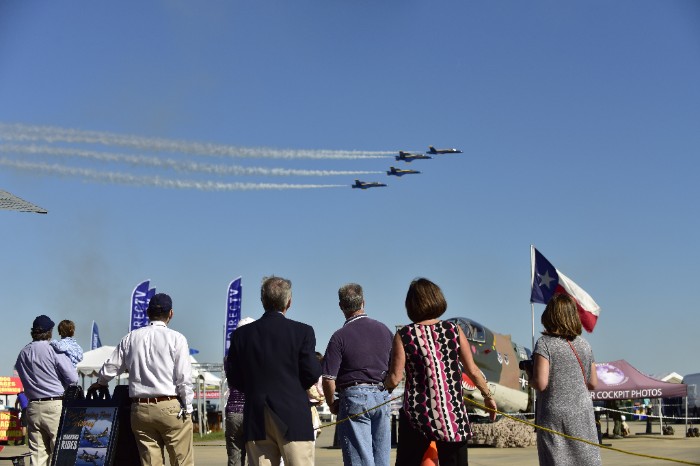
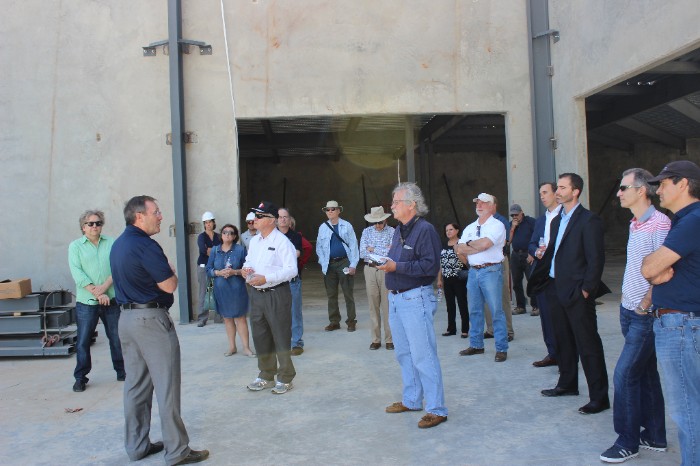
Support the LSFM
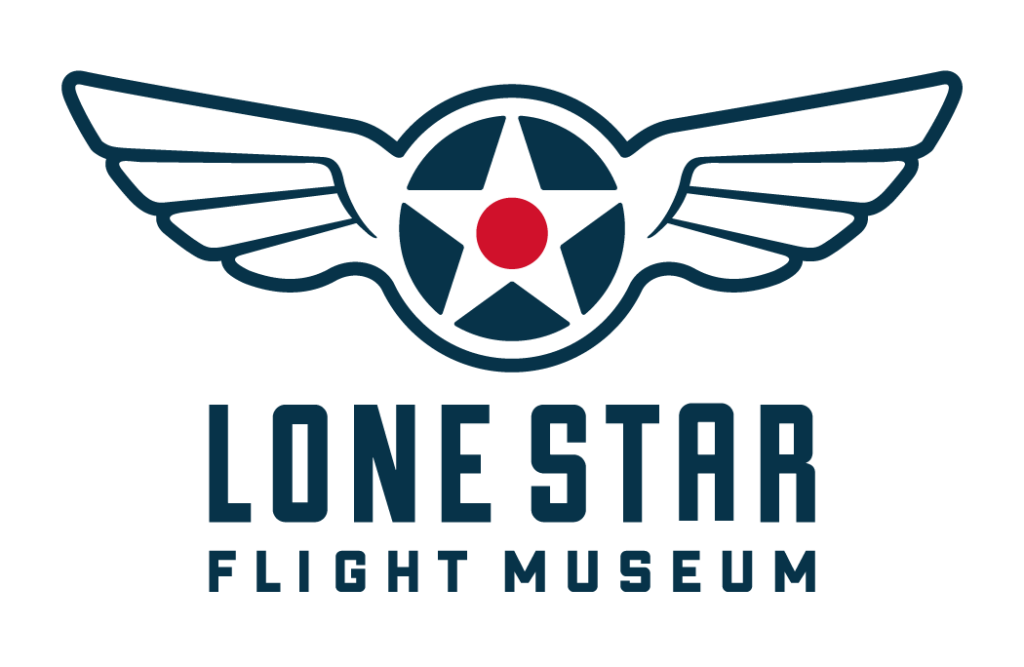
The Lone Star Flight Museum inspires visitors with the magic of flight, educates children and adults with the nation’s second Aviation Learning Center (ALC), and preserves history with the Texas Aviation Hall of Fame.
Help support us with a gift to our 2016 Annual Fund!
Your gift will help LSFM attract young people to careers in engineering, technology, science, and math and to inspire our next generation of aviation enthusiasts. It will also help support the aircraft collections, facilities, exhibits and educational programs that make LSFM a world-class museum.
Join the visionary Texans who are bringing this remarkable dream to life by making an annual gift. Gifts can be made online by clicking here or by mailing a check to LSFM:
Lone Star Flight Museum
PO Box 3099
Galveston, TX 77552
Please specify 2016 Annual Fund in the memo line.
Thank you for your support!
New Museum Update
Things are really taking shape at the site of the new Lone Star Flight Museum!
The project achieved a noteworthy milestone recently, with the official “topping out” of the building, where the tallest piece of the structure was erected. The barrel-shaped roof for the entrance hall was shaped, and the floor deck of the entire second floor was put into place.
The site is also gearing up for the slab pour of the west parking lot and the installation of the roof for the main building, the Heritage Hangar and the Waltrip Hangar.
Be sure to check back with us for more exciting updates!
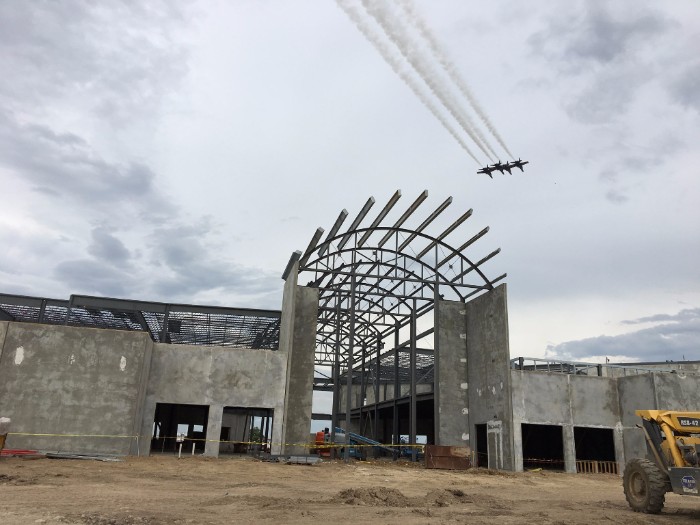
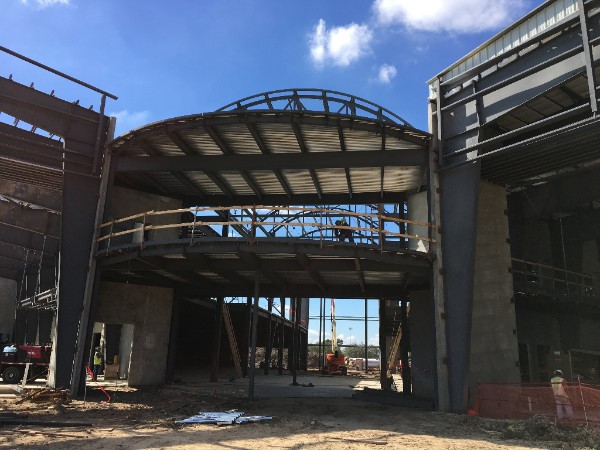


LSFM Remembers
Maybelle Fletcher
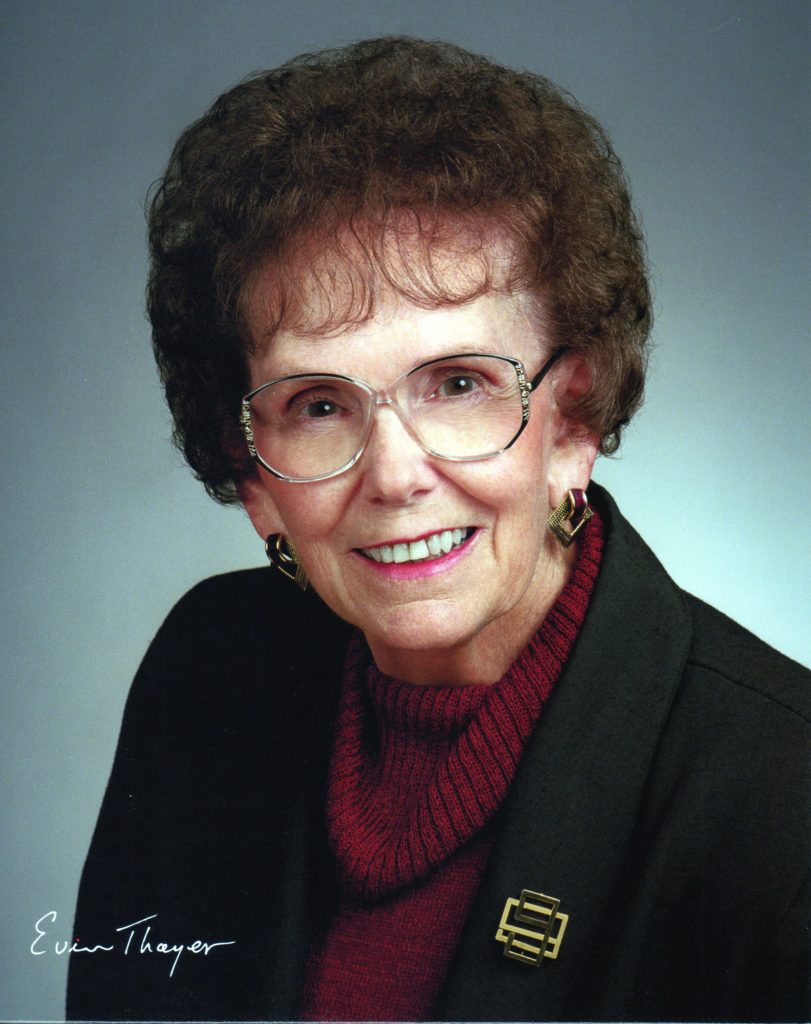
It is with great sadness that The Lone Star Flight Museum reports the passing of aviation pioneer Maybelle Fletcher.
In the more than 55 years Maybelle Fletcher was involved in aviation, she flew more than 175 different makes and models of aircraft, accumulating more than 30,000 flying hours. After becoming a certified flight instructor in 1947, Maybelle made significant contributions in several areas of aviation.
As one of the first women FAA Flight Examiners, she performed more than 6,000 check rides – the right of passage to obtain a pilot certificate or an additional rating. She was also an active and longtime member of the Ninety Nines, an organization of women pilots founded by Amelia Earhart; and was the founder of the Southwest Flying Club in Sugar Land, the oldest flying club in the state of Texas. One of the most monumental contributions however, was the proposal she developed for the FAA to manage Hobby Airport’s Class B airspace which is still in use today.
In 1968, Maybelle started Fletcher Aviation, Inc. in Sugar Land, relocating it to Hobby Airport in 1972. Fletcher Aviation is still in operation today, and includes three hangars with more than 140,000 sq. ft. of space.
In 2001, the Lone Star Flight Museum inducted her into the Texas Aviation Hall of Fame, and she became the first woman honored with the Wright Brothers’ Master Pilot Award in 2004. That same year, she was presented with the Lloyd P. Nolen Lifetime Achievement in Aviation Award by Wings Over Houston.
Though she received numerous awards, honors, decorations and certificates, she most notably made an historical impact not only on the role of women in aviation, but in the world of aviation as a whole.
Thank you for all you have done in the spirit of aviation. You will be missed!
Bob Hoover
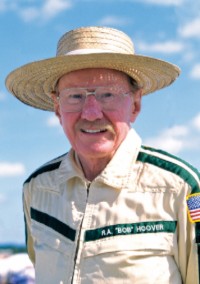
If you work or have an interest in aviation, you very likely have heard the name Bob Hoover. Jimmy Doolittle called him “the greatest stick-and-rudder man that ever lived.” Chuck Yeager referred to him as “the greatest pilot I ever saw.” High accolades from legends in their own right indeed. They were correct in their assessment of Bob Hoover’s skills. I had the opportunity to see him fly the P-51, Sabreliner, Shrike Commander and T-28. To call his aerobatic routines “stunts” sells his routine short and is not how he characterized it. It was “energy management” and it was impressive. I first met him at the Reno Air Races in 1987 and he flew Wings Over Houston that same year. You will see and hear many amazing stories about Bob’s flying abilities – and they only tell a part of his incredible story.
I wish to tell you about a different side of Bob Hoover that you may not have seen. Bob was frequently approached by individuals who would say that they met him at an airshow or some other event years earlier. He always acknowledged them and treated them with respect as though they were the only person in the room with him at that moment. He remained a southern gentleman throughout his life. While I was having lunch with him a few years ago one of his office personnel told him “Tom Cruise’s office called. He wants to talk with you about the Mustang.” At that time Tom Cruise had just bought a P-51. Bob’s response was “Tell them I can’t on Thursday. That’s when I play bridge.” He was not impressed with celebrity.
Generations of pilots have been inspired by his performances and his personality. Most pilots who have met him can tell you when and where that took place as he left a positive impression on those that he encountered. He was a mentor to many of the top aerobatic and warbird pilots of today and shared his knowledge of flying that undoubtedly allowed them to become better pilots.
One of my favorite stories about Bob occurred many years ago in San Diego. Bob had flown his routine in his Shrike Commander. After his performance, he had the aircraft fueled and loaded up some passengers for the short flight back to Los Angeles where he lived. Unfortunately, the young lineman filled his aircraft with jet fuel instead of avgas. Very shortly after takeoff, the engines quit and he was forced to land the aircraft in a ravine not far from the airport. Fortunately, no one was hurt and Bob and his passengers were transported back to the airport. Bob would later say “Actually, there was one fatality. I landed on a snake in the field.” He asked to see the young lineman who had fueled the aircraft. The young man had tears coming down his face when he approached Bob. You might expect harsh words or an admonishment for this young lineman. Rather, Bob said to this young man “They’re bringing me another aircraft tomorrow. I don’t want anyone else except you to fuel it.” And with that he restored this young man’s dignity.
I highly recommend his book “Forever Flying” and a DVD that came out about his life a couple of years ago named “Flying the Feathered Edge”. You won’t be disappointed I assure you.
On a personal note, I was honored to be able to call Bob Hoover a friend. Whenever I saw him he always asked about my son and took a personal interest in what he was doing. I was fortunate to spend time with him at Reno, at lunches and dinners, trade shows and meetings at various airports. There were many other stories that he has told that are too long to put here. I will greatly miss him as so many others will as well. We were better for having known him. Blue skies and tailwinds, Bob.
Curator’s Corner: The Engine Makes the Plane
By Stewart W. Bailey
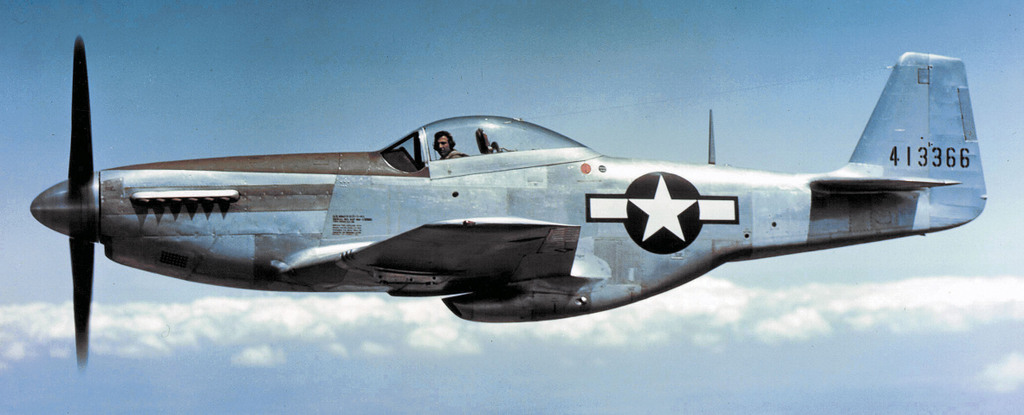
There is an old saying that “the clothes make the man,” and while that may or may not be true, it is certainly true that the engine can make an airplane.
The history of aviation is littered with hundreds of failed aircraft designs that would have been great, if only they had a better engine. Maybe it just didn’t have the power that was needed, or its reliability proved so poor that the aircraft spent more time on the ground under repair than it did in the air. But from the time the Wright brothers took to the air in 1903 to today, a good engine has always been the key to a great airplane.
One of the best pairings of an airframe and engine occurred in August, 1942 when Ronald Harker, a test pilot for Rolls-Royce in England took a flight in a new North American P-51A Mustang powered by an Allison V-1710 engine. While he found the aircraft to have impressive performance at low and mid-level altitudes, he felt the performance was disappointing at high altitudes. His suggestion was to install a Rolls-Royce Merlin engine. While it could be said that Harker was just being a good salesman for Rolls-Royce products, his suggestions encountered stiff resistance within the British Royal Air Force (RAF), as production of the Merlin was needed for the British-built Spitfires, Hurricanes, Mosquitos and Lancasters which were rolling off the assembly lines in huge numbers. Still Harker persisted and it paid off when the RAF converted five P-51As to use the Rolls-Royce Merlin 65 with a two-stage supercharger. In flight trials that lasted through October and November of 1942, the performance of the re-engined Mustang was nothing less than spectacular, especially at high altitudes.
In the United States, the interest in a Merlin-engined P-51 Mustang was less than enthusiastic. The Mustang had been designed by North American Aviation at the request of the British government and had no strong supporters within the Army Air Force at Wright Field in Ohio, where all the flight testing was done. As Lt. Col. Thomas Hitchcock, the assistant air attaché in London said of it, “Sired by the English out of an American mother, the Mustang has no parent at Wright Field to appreciate and push its good points.” However, two Mustangs from the RAF contract were converted to the Merlin power plant and tested by the Army Air Force. The first flight took place on November 30, 1942, and the performance of the new engine and airframe combination turned heads, especially, with a 441 mph top speed at 30,000 feet.
The Packard Motor Company of Detroit, had a license to build the Merlin in the US under the designation V-1650 for the P-40F Warhawk, but that version lacked the two-stage supercharger of the Merlin that had been tried in England. Packard found themselves having to ramp up production of the new version of the engine, as the Army Air Force ordered 400 Mustangs, designated P-51B and the RAF ordered 1000. At the same time, North American Aviation had to increase their production and the new factory that had been built in Dallas, Texas, began producing the P-51C, which was identical to the B-model built in California. In the end, P-51 Mustang production at the Dallas plant would total 4,850 aircraft, almost a third of all Mustangs made.
This was not to say that the Allison was not a good engine. Quite the contrary, as the V-1710 was used to power the P-38 Lightning, P-39 Airacobra, P-40 Warhawk, P-63 King Cobra and P-82 Twin Mustang. Both were 12-cylinder V-configured engines, producing between 1,400 and 1,500 horse power, but the supercharged Merlin paired with the P-51 Mustang airframe, made for an unstoppable pair. The engine’s high-altitude performance along with a fuel consumption that was less than half that of a P-47 Thunderbolt, gave the Mustang both the range to escort heavy bombers on long missions over Germany and superior speed to defeat the enemy’s fighters.
Visitors to the Lone Star Flight Museum can see a Rolls-Royce Merlin engine on display along with a number of other historic aircraft engines. While not as prominent as the beautiful aircraft that most people come to see, this unique piece of mechanical art helped to change the course of World War II when it was paired with just the right airframe. The Rolls-Royce Merlin engine truly made the Mustang great.

This Day in Aviation History
- November 1, 1911 – Italian Army Lieutenant Giulio Gavotti makes history’s first aerial bombing as he drops grenades from his aircraft onto an Ottoman encampment in Libya.
- November 1, 1926 – At the urging of aviation leaders and President Calvin Coolidge, the Air Commerce Act is passed into law, authorizing such fundamentals as pilot licenses, aircraft worthiness certificates, airways and investigation of accidents for the first time.
- November 1, 1943 – The 15th Air Force was activated in the Mediterranean as a strategic air force. It began combat operations the next day with its first commander General Jimmy Doolittle.
- November 1, 1954 – The USAF retires its last B-29 “Superfortress” from service. The B-29 was the most technologically advanced – and complex – aircraft of WWII.

- November 1, 1992 – The Space Shuttle Columbia completes mission STS-52 after landing at Kennedy Space Center.
Sources: NYCAviation.com; Skytamer.com; ThisDayinAviation.com
